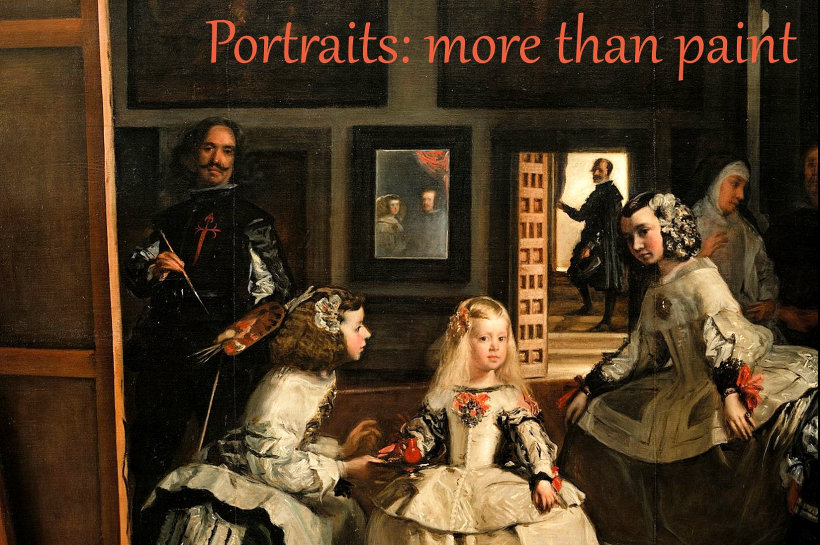TO THINK ABOUT
There was a lot left on the cutting-room floor after I had prepared this class. Here are portraits by six artists of the
earlier Twentieth Century, only one of whom is featured in the class. I have arranged them as three comparisons: a pair of
female portraits, a pair of male ones, and an interesting portrait-exchange between male and female Surrealists. Click
on the images for larger versions.
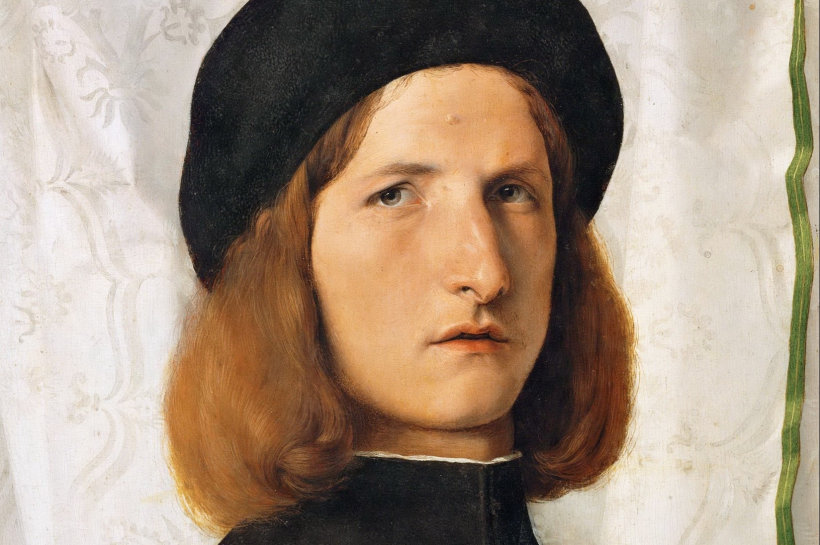
Portraits by Henri Matisse and Gabrielle Münter
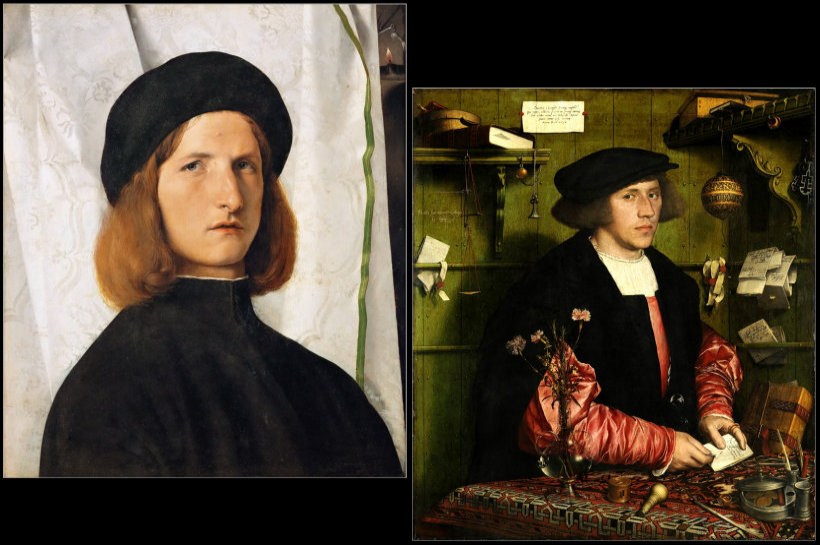
Henri Matisse: Portrait of his Wife (1905, Copenhagen)
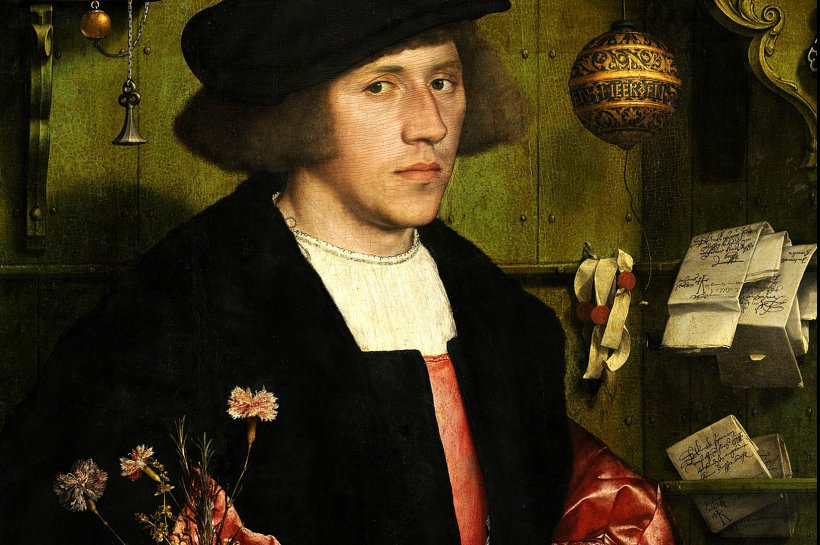
Gabrielle Münter: Girl with Red Ribbon (1908, Dublin)
The Matisse painting, sometimes called "The Green Stripe," features often in art-history books as a ground-breaking
work of Modernism. The Münter work, only three years later, is far less often seen. Why do you think this is?
Which is the more radical? Which do you find more attractive? Do they work equally well as portraits?
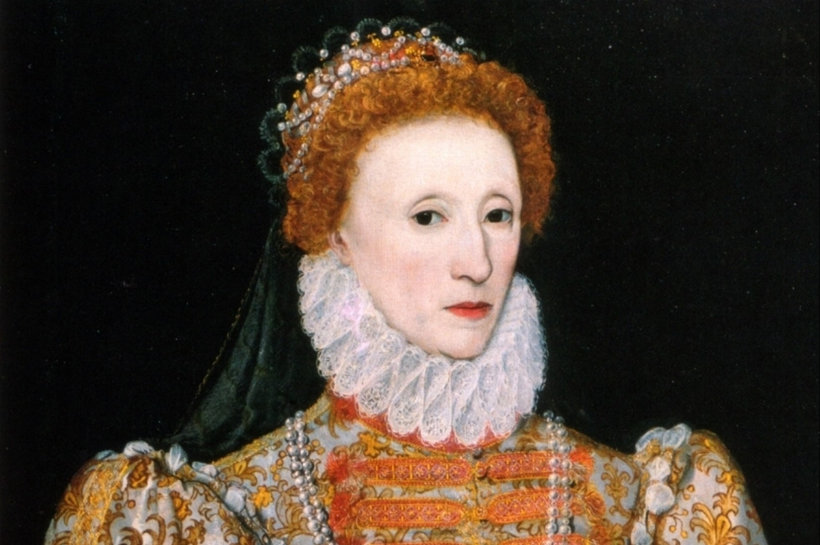
Portraits by Oskar Kokoschka and Ludwig Ernst Kirchner
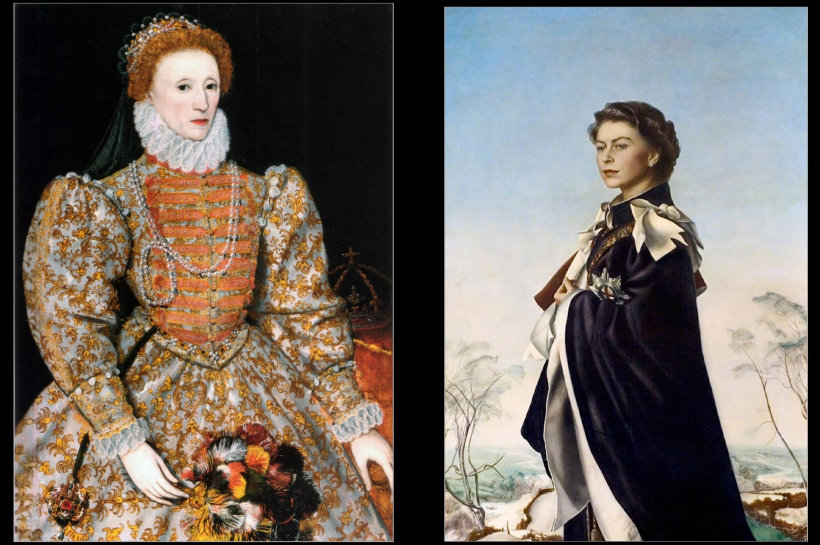
Oskar Kokoschka: Arnold Schoenberg (1924 left, 1910 right)
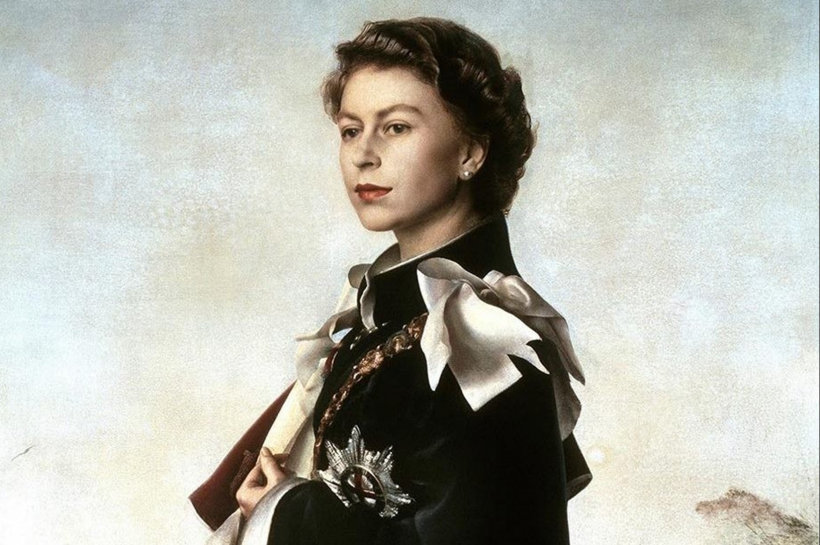
Kirchner: The Poet Leonhard Frank (1917)
These are two portraits by artists of other artists: a composer and a poet. They are remarkably similar in pose
and color. How do the styles differ? What do you make of the shapes in the background of each? The smaller image
on the Kokoschka slide was painted shortly after the painter had met the composer for the first time; how does
it differ from the portrait he painted much later, on Schoenberg's 50th birthday? If you know any of his music,
which painting seems to reflect it more closely?
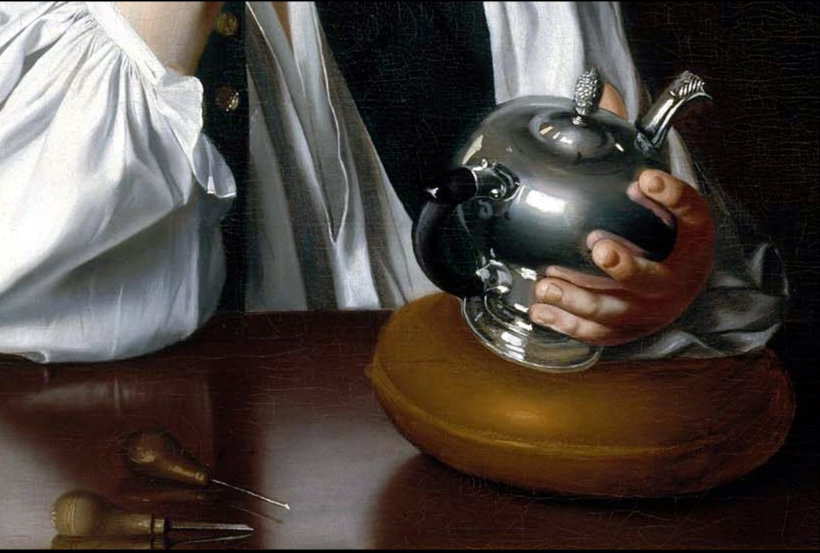
Portraits of one another by Max Ernst and Leonora Carrington
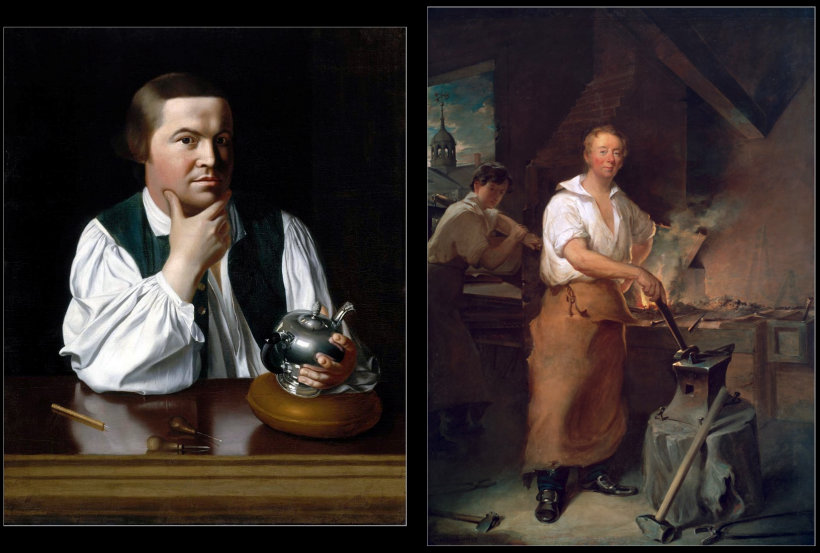
Leonora Carrington: Portrait of Max Ernst (1939, Edinburgh)
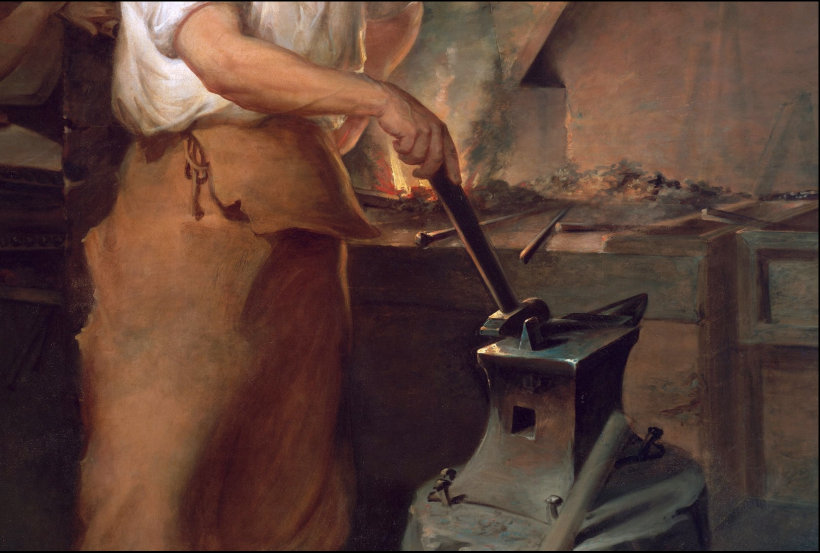
Max Ernst: Leonora in the Morning Light (1940)
The British artist Leonora Carrington met Max Ernst (a leading Surrealist) in London in 1937; he immediately
divorced his wife and moved with Carrington to the South of France (read more on
Wikipedia).
The portraits they made of each other are clearly full of symbolism; I won't attempt to explain it, but
perhaps you can? rb.
Below are the major artists and writers mentioned in the class, in chronological order. An alphabetical listing of artists
for the whole course can be found here. And don't forget to check out
the new slideshow of artists' self-potraits I put together as
FOUR DOZEN SELFIES.
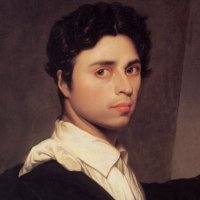 |
Jean-Dominique Ingres, 1780–1867. French painter.
Ingres was trained in the academic tradition, and indeed spent 7 years as Director of the French Academy in Rome. Although one of the great masters of French Romantic era, his style was always marked by a cool classicism and precision of line, in contrast to the freer handling of paint by his contemporary Delacroix.
|
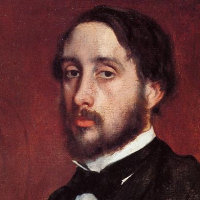 |
Edgar Degas, 1834–1917. French painter and sculptor.
The son of a wealthy banker, he originally trained for the law. When he did go into art, he painted mostly traditional subjects until Manet introduced him to the Impressionists, at which point he turned entirely to scenes from everyday life—including a good number of portraits, mostly in informal settings. Although he was the only artist to participate in all eight Impressionist shows, he strongly resisted the term, and pursued his own quite original course.
|
 |
Paul Cézanne, 1839–1906. French painter.
With Gauguin and Van Gogh, though painting in a very different style from either, Cézanne is considered one of the leading artists of the Post-Impressionist period. Working first in an academic style, he was converted to Impressionism by his friend Camille Pissarro. After exhibiting in the first two group shows, however, he returned to his native Aix-en-Provence, living like a recluse and painting pictures whose play with space and surface would revolutionize 20th-century art.
|
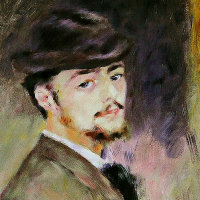 |
Pierre-Auguste Renoir, 1841–1919. French painter.
A leading member of the Impressionist group, he began his career as a china painter in the Limoges factory, which—together with his admiration of Rococo masters such as Watteau and Fragonard—may have influenced the sweetness of color seen in much of his work. He was more concerned with detail, and more interested in figures than most of his colleagues.
|
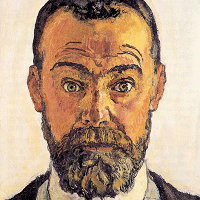 |
Ferdinand Hodler, 1843–1918. Swiss painter.
"Ferdinand Hodler was one of the best-known Swiss painters of the nineteenth century. His early works were portraits, landscapes, and genre paintings in a realistic style. Later, he adopted a personal form of symbolism which he called parallelism." [Wikipedia] He also did a remarkable set of sketches of his lover as she lay dying of cancer.
|
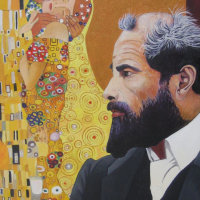 |
Gustav Klimt, 1862–1918. Austrian painter.
Klimt was the foremost painter of the Vienna Seccession at the turn of the century. He specialized in female subjects, some taken from myth, painted in a highly-patterned Symbolist style, erotic and richly colored, often with the addition of gold leaf. His Danaë of 1907 is a prime example.
|
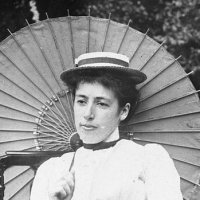 |
Frances Hodgkins, 1869–1947. New Zealand painter.
Hodgkins was a New Zealand artist of landscapes, still-lifes, and portraits (including what she called "portrait still-lifes") who spent most of her career in Europe. Although she came to modernism comparatively late, by the end of her life she was regarded as one of the leading modernists in Britain.
|
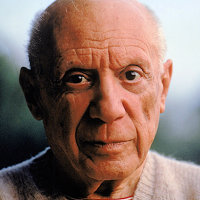 |
Pablo Ruiz Picasso, 1881–1973. Spanish painter, printmaker, and sculptor.
Picasso's invention of Cubism around 1910 (with Georges Braque) made him arguably the most important figure in 20th-century art. However, his entire career from precocious youth to energetic old age was distinguished by rapid changes of style, constant experimentation with new media, and a gift for finding the exact image to capture an historical moment, as in his Guernica of 1937.
|
 |
Charles Demuth, 1883–1935. American painter.
Demuth (accent probably on the first syllable, although there is some controversy) worked mainly in watercolor in his early career, later turning to oils, especially of architectural subjects, in a style that he called "precisionism" (or cubo-realism by others). He was also noted for a series of semi-abstract "poster portraits" he made of friends in the late 1920s, among them I Saw the Figure 5 in Gold for William Carlos Williams.
|
 |
Amadeo Modigliani, 1884–1920. Italian painter.
Born in Italy, Modigliani studied Renaissance art, which was a clear influence on his later paintings: the clarity of the quattrocento and the elongated rhythms of the Mannerists. He moved to Paris in 1906, and immediately associated with the avant garde. Although he struggled financially before his premature death (alcoholism and tuberculosis), his portraits were much appreciated soon after.
|
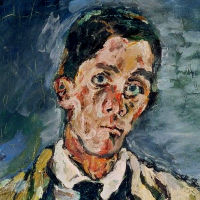 |
Oskar Kokoschka, 1886–1980. Austrian painter and playwright.
One of the leading Expressionist painters in Vienna, Kokoschka was also a poet and playwright. Starting mainly as a portraitist with a distinctive style of very free brushwork, he widened his interests to include landscapes, cityscapes, and other subjects when he began to travel in the later 1920s. Denounced as degenerate by the Nazis, he became first a Czech and later a British citizen.
|
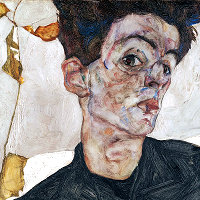 |
Egon Schiele, 1890–1918. Austrian painter.
A follower of Gustav Klimt, who encouraged him throughout his career, Schiele early developed a highly energetic style of nervous lines and angled forms. Despite his tendency to depict his subjects as though gesticulating, he had some success as a portraitist, but is now better known for his frank depictions of sexual subjects.
|
 |
Otto Dix, 1891–1969. German painter.
After service in the First World War, recorded in some of his most savage paintings, Dix became a critical commentator on social conditions in the Weimar Republic.
|
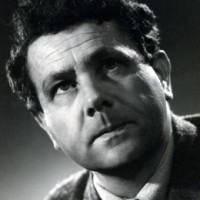 |
Gerald Finzi, 1901–56. English composer.
Although he composed in other genres, Finzi is best known for his vocal works, such as the cantata Dies Natalis (1939), his Shakespeare cycle Let Us Garlands Bring (1942), and many settings of Thomas Hardy.
|
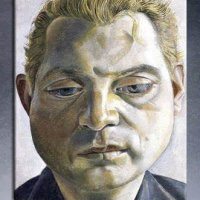 |
Francis Bacon, 1909–92. British painter.
Bacon was born in Dublin to English parents, but left home in his teens to move to London and thence to Paris. He had no formal training as a painter, but when he emerged in 1945 with Three Studies for Figures at the Base of a Crucifixion, he both galvanized and divided critics by the fierceness of his imagination and savagery of his style. Alan Bowness, the former director of the Tate, wrote that "no artist in our century has presented the human predicament with such insight and feeling."
|
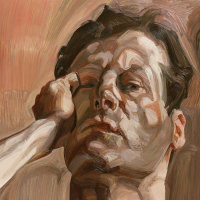 |
Lucian Freud, 1922–2011. German-English painter.
Born in Berlin, the grandson of Sigmund Freud, Lucian came to Britain in 1931 with his parents and became a British citizen in 1939. One of the leading representational painters in postwar Britain, he was also her leading portraitist, albeit in an uncompromising and less traditional style.
|
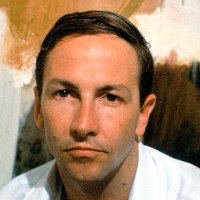 |
Robert Rauschenberg, 1925–2008. American painter.
Rauschenberg famously stated that “painting relates to both art and life,” and he wanted to work "in the gap between the two.” He became famous for his Assemblages, paintings in an Abstract Expressionist style which incorporated real objects. He also made extensive use of photographs, screen-printed onto the painting surface. He was the winner of the International Grand Prize in Painting at the Venice Biennale of 1964.
|
 |
Andy Warhol, 1928–87. American multi-media artist.
Warhol (born Andrew Warhola Jr.) worked in many media beside painting, including silk-screen printing, sculpture, and film. Many of his images, such as those of Campbell soup cans, were not only taken from industrial sources, but reproduced multiple times by industrial methods. His studio, which he called The Factory, became the nerve center of American Pop Art.
|
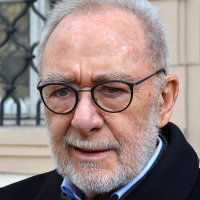 |
Gerhard Richter, 1932– . German painter.
Richter, who at one point was the highest-earning living artist, has worked in numerous styles, including a very personal brand of lyrical and slightly out-of-focus photo realism.
|
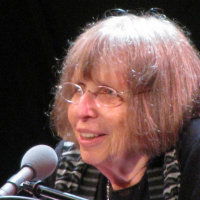 |
Linda Pastan, 1932–2023. American poet.
The former Poet Laureate of Maryland, "she was known for writing short poems that address topics like family life, domesticity, motherhood, the female experience, aging, death, loss and the fear of loss, as well as the fragility of life and relationships." [Wikipedia]
|
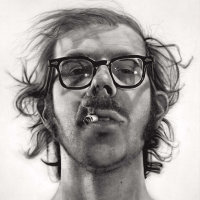 |
Chuck Close, 1940–2021. American painter.
One o the leading photo-realists, Close developed a style of portraiture based on huge blow-ups of his own photographs, painstakingly transposed to the canvas stroke by stroke. Over his career, he gradually moved from black-and-white to color, later enlarging the pixels to give them an abstract life of their own—a transition accelerated by the results of 1988 seizure that confined him to a wheelchair.
|
 |
Robert Weingarten, 1941– . American photographer.
Weingarten has published several series of photographs, such as 6:30 AM (the same view taken from his Malibu window each day for a year), and photo-collages such as Pentimento (superimposing historical images over an image of the same site today) and The Portrait Unbound (images associated with a particular person).
|
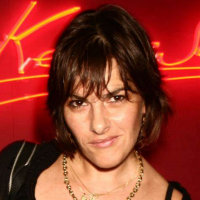 |
Tracey Emin, 1963– . British artist.
Notorious for her confessional installations, Everyone I Have Ever Slept With 1963–1995 (a tent appliqued with the names of her many partners) and My Bed (the debris of a depressed week in bed in 1999), Emin is also Professor of Drawing at the Royal Academy,
|
 |
Cindy Sherman, 1964– . American photographic artist.
Sherman's work consists primarily of photographic self-portraits, depicting herself in many different contexts and as various imagined characters. Her series of 70 Untitled Film Stills (1977–80) were black-and-white take-offs of B-movie films noirs. Later, she moved into large-format color photographs including detailed props and high-chroma color schemes.
|
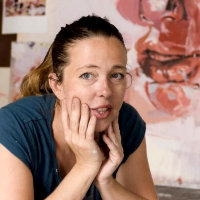 |
Jenny Saville, 1970– . British painter.
Educated at the Slade School and the Glasgow School of Art, Slade has made a name for herself especially for her paintings of large women's bodies, reclaiming the body from contemporary notions of beauty and societal expectations.
|



















































